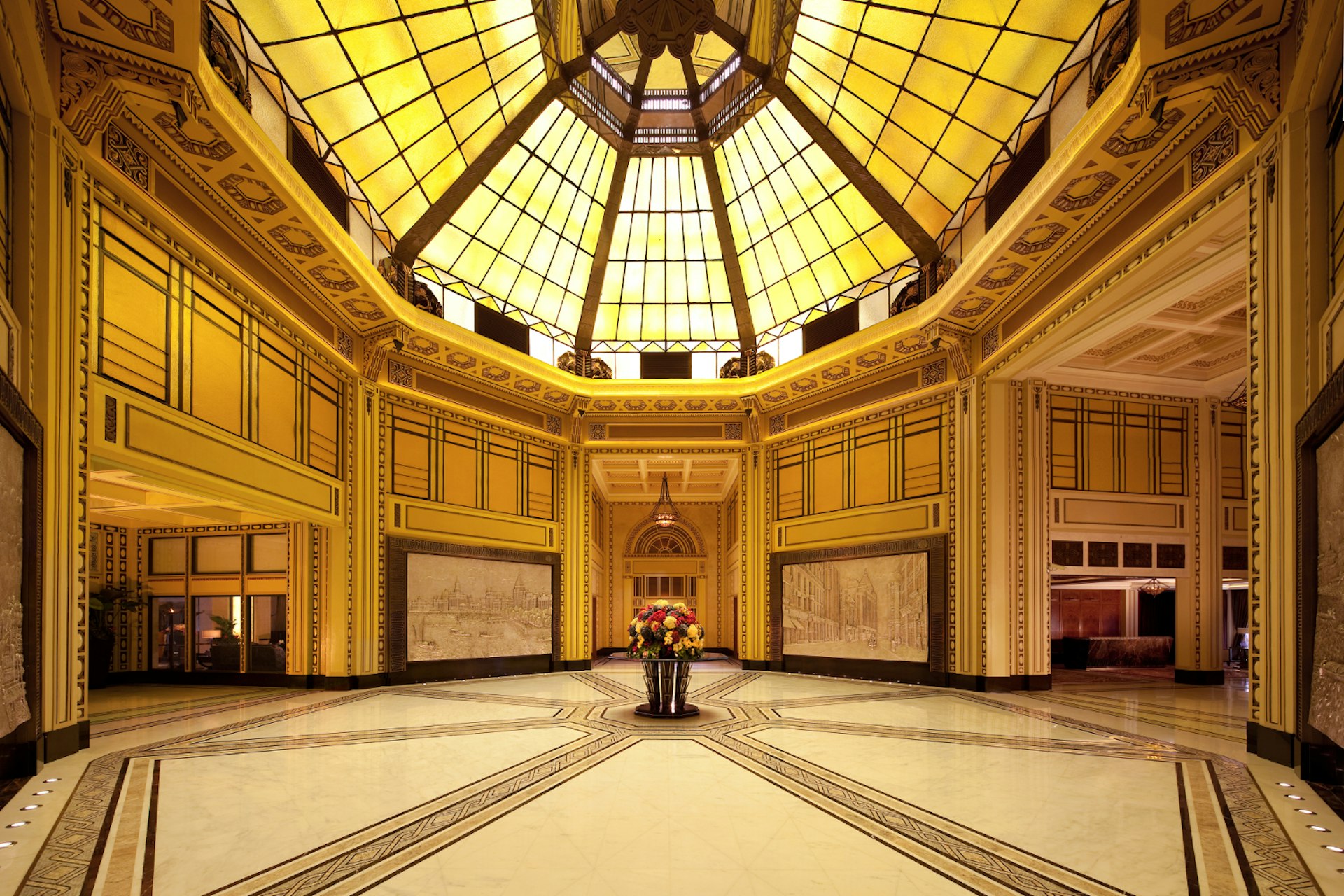
Introduction
Step into the enchanting world of Art Deco, a style that redefined architecture, design, and aesthetics from 1925 to 1940. This iconic movement emerged as a bold departure from the preceding ornate styles, offering a harmonious blend of modernism, glamour, and luxury. Art Deco captivated the imagination of its time, and its influence continues to echo through contemporary architecture and design. In this article, we will embark on a captivating journey through the essence, characteristics, and lasting impact of Art Deco style architecture.
The Birth of a Design Revolution
An Era of Innovation and Expression
Art Deco emerged as a response to this yearning, embracing innovation and embracing a visual language that exuded luxury, elegance, and optimism. This movement was a celebration of the machine age, marked by sleek lines, geometric shapes, and a touch of opulence.
Characteristics of Art Deco Architecture
Symmetry, Geometry, and Extravagance
Art Deco architecture is instantly recognizable by its distinct characteristics. Symmetry reigns supreme, with buildings often featuring balanced compositions that create a sense of order and harmony.The allure of Art Deco lies in its ability to seamlessly integrate luxury into these geometric designs, often through the use of lavish materials like marble, glass, and metals.
Transitional Phrases
As we delve deeper into the intricate details of Art Deco architecture, it’s important to acknowledge the pivotal role of transitional phrases in creating a cohesive visual experience. From the bold transition from curvilinear Art Nouveau to the angular geometries of Art Deco, this movement encapsulates the essence of change.
Skyscrapers that Touch the Sky
Reaching New Heights in Design
Art Deco made its mark on the skyline with skyscrapers that dared to touch the heavens. These towering achievements of design showcased the movement’s focus on verticality and sleek lines. The Chrysler Building in New York City stands as a timeless example of this approach, with its gleaming stainless-steel spire and intricate ornamentation that pays homage to the machine age.
Interjections and Idioms
Hold your breath as we explore the striking interjections and idioms that Art Deco brought to the architectural table. Just like the expressive nature of “Oh my goodness!” or “Wowza!”, Art Deco buildings left people in awe with their audacious designs and unexpected detailing.
A Global Phenomenon
From Miami to Mumbai
Art Deco transcended borders, captivating the hearts of people around the world. From the pastel-hued beauty of Miami’s South Beach to the grandeur of Mumbai’s Marine Drive, Art Deco’s influence was truly global. This style effortlessly adapted itself to local cultures, resulting in diverse interpretations that retained the essence of luxury and modernism.
Plagiarism-Free Creativity
Inspiration without Imitation
Art Deco drew inspiration from a multitude of sources, including ancient civilizations, modernist art movements, and the rapid technological advancements of the time.
Legacy and Contemporary Revival
From Nostalgia to Modern Relevance
The sleek lines, bold geometric shapes, and a touch of opulence continue to influence modern architecture and design. Contemporary architects pay homage to Art Deco by infusing its elements into their creations, creating a harmonious bridge between the past and the present.
The Origins of Art Deco
Harking back to the aftermath of World War I, the world was in a state of transition. As societies embraced technological advancements and urbanization, a desire for something new, something distinctively modern, arose.
Characteristics of Art Deco Architecture
Geometric Elegance
Art Deco architecture is characterized by its geometric forms and symmetrical designs. Buildings of this style often feature sleek lines, sharp angles, and intricate patterns that give them a sense of sophistication.

Luxurious Materials
Art Deco buildings embraced opulent materials such as marble, chrome, glass, and precious metals.The use of materials like glass allowed architects to experiment with new ways of manipulating light, leading to the creation of captivating plays of light and shadow within the structures.
Bold Colors
One cannot think of Art Deco without envisioning its vibrant color palette.
Iconic Examples of Art Deco Architecture
The Chrysler Building, New York City
One of the most iconic examples of Art Deco architecture is the Chrysler Building in New York City. With its distinctive spire, ornate metalwork, and intricate setbacks, the building stands as a testament to the style’s grandeur.
The Hoover Building, London
Across the Atlantic, the Hoover Building in London showcases the international reach of the Art Deco movement. Originally built as a factory, this building seamlessly blends functionality with elegance.
Conclusion
In the grand tapestry of architectural history, the Art Deco movement stands as a shimmering thread, weaving together innovation, luxury, and a timeless sense of style. From the bold skyscrapers that touch the sky to the intricate detailing that leaves us awestruck, Art Deco architecture remains a testament to the power of design to shape and reflect the spirit of an era.

